Diego Aparicio reviews Carla Simón’s fresh biographical drama.
This review originally appeared on the author’s film blog, Observancy. It has been slightly modified.
Estiu 1993 (“Summer 1993”) has made quite a splash: Carla Simón’s autobiographical feature debut won the Best First Feature Award in Berlin this year, will be to the first film in Catalan ever to compete for an Oscar, and was one of the ten European (co-)productions in the European Parliament’s LUX Prize 2017 Official Selection. And all on a budget of only €960,000.
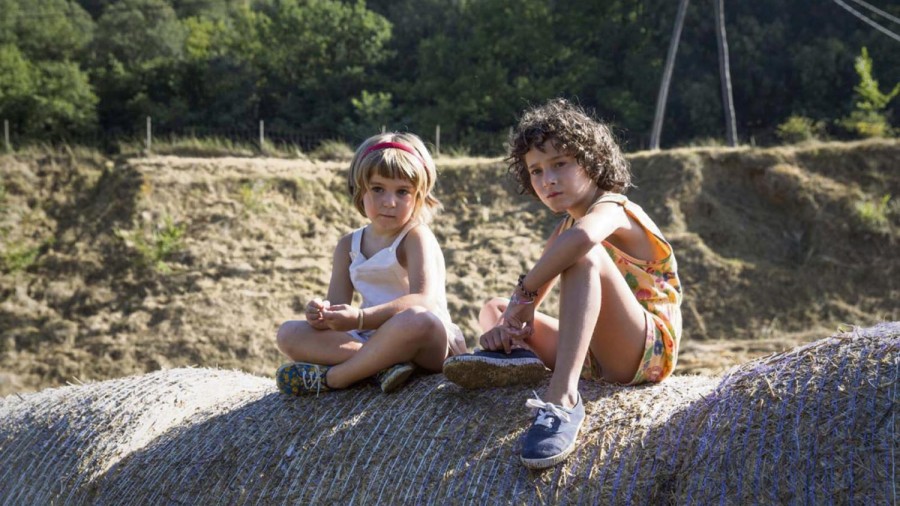
A spoiler-free review
Working with child actors can be tricky business, but in making Summer 1993 writer-director Carla Simón has risen way above that challenge, to deliver a film of truly remarkable sincerity: an astonishing portrayal of a child dealing with loss. Following the death of her mother, six-year-old Frida (Laia Artigas) leaves her home in Barcelona to live with her aunt (Bruna Cusí), uncle (David Verdaguer) and younger cousin Anna (Paula Robles) in the countryside. The camera almost transports us next to Frida, and takes us on a very intimate journey right by her side: we’re observing Frida as she tries to adjust in her new home, with her new family, over the course of a summer. Shot within six weeks in Catalonia, over the summer of 2016, the film is rich in natural light, and probably quite truthful, visually, to the summer of 1993 that inspired its story. The realistic nature of the screenplay is one of the film’s strongest points, and the all-round strong performances really help bring that out: there is honestly no way to stress how talented the child actors are, and how great a job Simón has done in directing them. The film steers clear of almost every cliché imaginable for the genre, and finds beautiful ways of telling its story visually without force-feeding its audience emotions: there is no sentimental music in the background, and no constant crying. The storm brewing inside Frida is silent, and so are her tears.
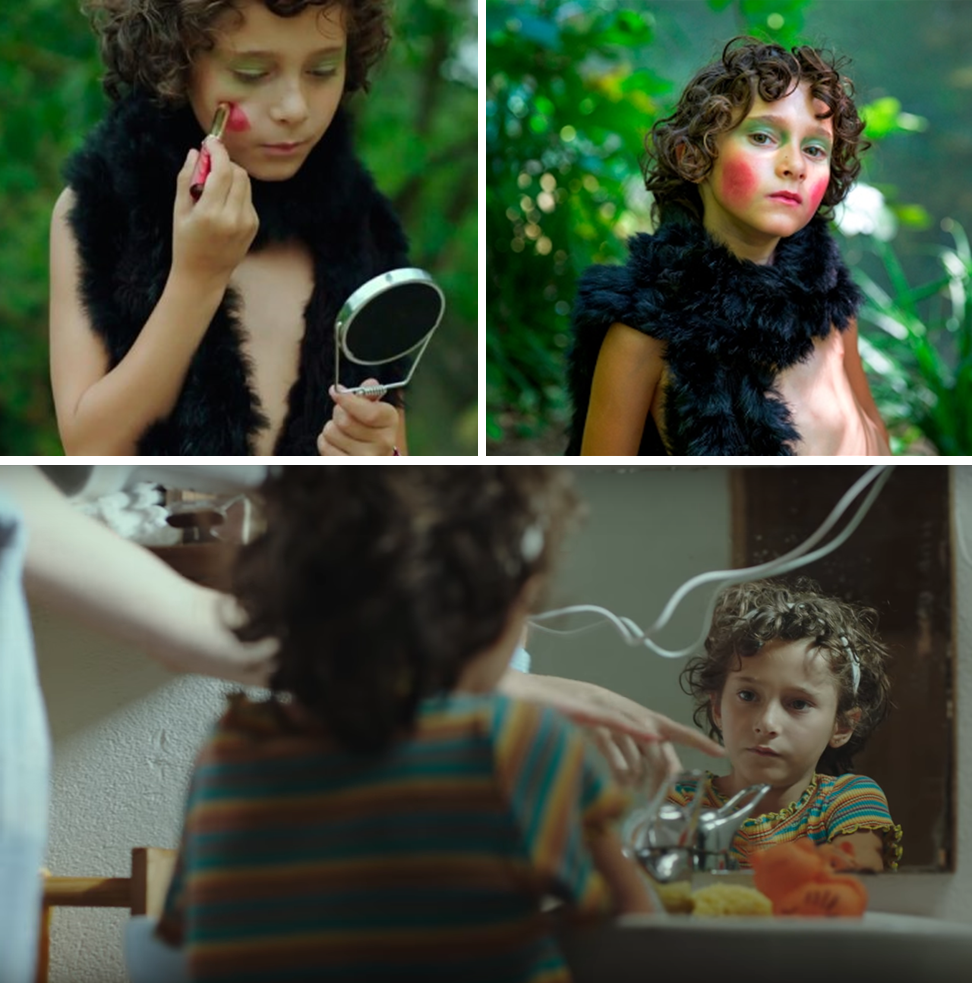
Further remarks
‘Why aren’t you crying?’ a little boy asks Frida as she leaves the city. This, in some sense, becomes the core of the entire story. The film returns to this question only at the very end, in a very memorable final sequence. Interestingly, the above line seems to be inspired by a sense of guilt that the writer-director felt, for not having cried the day her mother died. Carla Simón recalls thoughts of fleeing from her new home in 1993, a thought which also occurs to Frida in the film. Simón also recalls praying to a picture of her mother every night: in the film, this is instead portrayed through the scenes where Frida visits a statue of the Virgin Mary.
The film approaches the subject of loss through a very authentic lens. The audience is invited to see Frida’s world through her eyes, and her eyes alone, following her in every single sequence. All we’re ever witness to is Frida’s experience of her reality. Though her family receives her with open arms, Frida has a hard time adapting to her new home. Time and again, we see her staring at her new family as if they’re strangers to her. We see her experiencing all the confusing emotions that make her so human: fear, jealousy, love, compassion, sadness, joy – these are all part of the delicate picture that Simón so skillfully paints.
Bruna Cusí is brilliant as the aunt, and her character is extremely well-written and crucial, as Frida’s new mother figure. It’s interesting that, while it’s the uncle who shares a blood tie with the girl, it is the relationship with Frida’s aunt that is explored the most. Her way of helping Frida heal after her loss defines a fine role model for an adopting parent. Although it’s something never said in words, there is a detail in the film that is significant to Simón’s (as well as Spain’s) past, which is that Frida’s parents both die of AIDS. This causes other parents to be over-protective of their children when they’re playing with Frida. There’s a scene early on, on a playground, where the aunt defends Frida against another mother’s prejudice, and that really tells us that she really does care for the child as though she were her own. She tries her best to help Frida integrate in her new family, by limiting visits to (or from) her grandparents at first: and though that may not be what the girl wants at the moment, it might nonetheless be what’s best for her. However, later on, the aunt is worried that her daughter Anna might be negatively influenced by Frida’s spoiled behaviour. Naturally, she then tries to protect her daughter, by somewhat distancing Anna from her cousin. And it’s interesting how this helps Frida grow more mature: when she realises that her attitude is causing problems to the family, she becomes scared that she might lose the love she has thus far taken for granted.
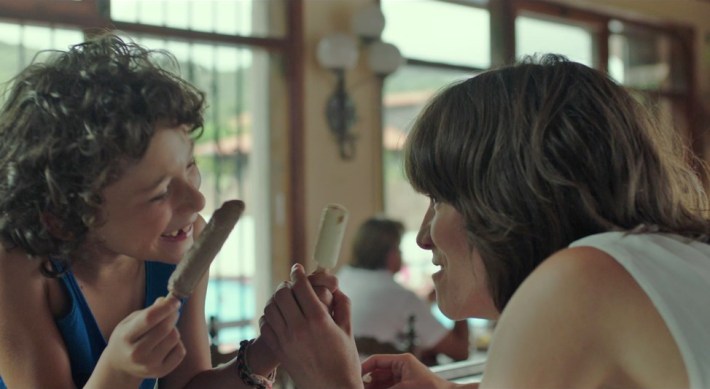
On making a film about this important part of her past, Simón commented that it was hard to let go of what she had envisioned for certain scenes. There are times on set where you simply can’t do exactly what you had in mind; it’s hard enough for directors to accept that in general, let alone when that artistic vision is combined with a sense of personal attachment to a memory. ‘At certain points during the writing process’, she admits, ‘there were scenes where I couldn’t tell the difference between memories I was remembering and memories I was imagining’.
As for casting Laia Artigas as Frida, the director has pointed out that almost 1,000 children had auditioned before Laia finally appeared. Simón found the brutal intensity in the child actor’s gaze to be truly captivating, and full of ambiguity: ‘Laia had the qualities that you might expect of a ‘good girl’, but you had no idea what she was actually thinking’.
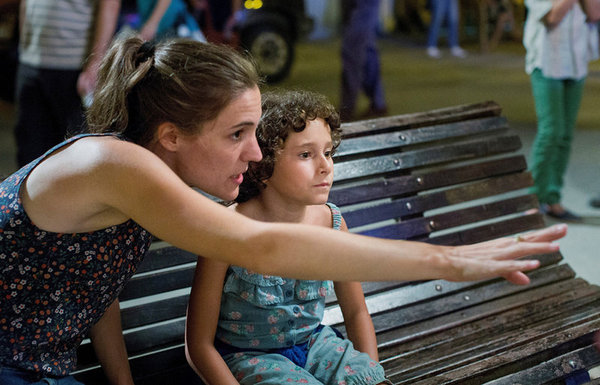
Strong cultural references in the film are a prominent feature, and serve as good reminders of the fact that the story takes place in Spain, and specifically in Catalonia. The dialogue is, after all, entirely written and delivered in Catalan. Several traditions seem to have made their way into the script, such as a song the family sings at the table on St Joan’s day; or the “big heads” that are part of a costume used in what seems like a local festival. It is interesting that the audience gets to witness these traditions. These customs are part of Frida’s everyday life and the culture to which she belongs, and in some sense they help the audience establish a certain connection with the protagonist.
Summer 1993 is undoubtedly excellent at evoking a whole breadth of emotions in its audience but, above all, it is a film full of humanity. It is a film that turns its tender, caring gaze towards childhood, and reminds us how important it is – for any child growing up – to discover honesty, and to feel the loving, nurturing presence of a family – whatever shape it may present itself in.
The visual storytelling
One of the main cultural elements present in the film is religion, and it’s interesting how the film plays with this theme. Grandma tells Frida to pray every night, so she will feel closer to her mum. Before leaving home, Frida is shown holding one of her dolls. Soon after, in the countryside, she discovers a little altar with a Virgin Mary holding her baby in much the same way. It is a strikingly beautiful visual touch: ‘the mother of mothers’ finds a parallel in the face of an orphan girl.
Frida visits the Virgin Mary statue several times in the film. She presents the Virgin with a packet of cigarettes, as well as a dress. In all her childhood innocence, she asks that the Virgin give these presents to her mother when she visits her. And then comes the loss of innocence, in a scene that complements the first one in a painfully beautiful way: after some time has passed, Frida discovers that her offerings were never accepted. The gifts are untouched, and there’s a wild overgrowth of vines surrounding the statue, perhaps a symbolic representation of the fact that nature has taken its course, and that her mother is no longer within her reach. Yet Frida’s reaction seems unnervingly silent.
Another way in which Frida seems to be trying to hold onto her mother’s image is through role-playing with her cousin Anna. In an iconic scene that also serves as comic relief, we see her dressing up and talking in a way that only someone much older than her would. While very funny, the scene also touches on the theme of her untimely maturity and cleverness.
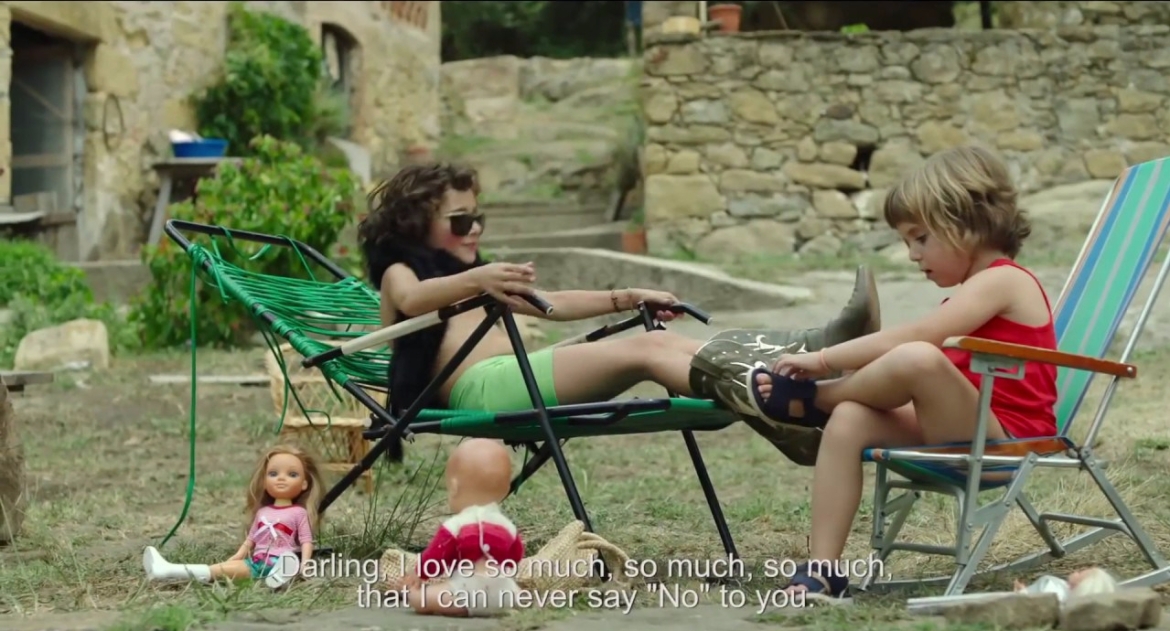
A central theme explored by the film is the feeling of exclusion that Frida experiences. This is emphasised particularly well in a scene where the family spends an evening together around the town square, with Frida sitting alone on a bench. Her longing gaze is intensely fixed on her new family, as her uncle, aunt and cousin all dance together as a ‘real, happy family’ would. She feels like an outsider to this family, and to their happiness. We are observing her on that bench as a spectator among the crowd would, and she’s observing her relatives within that crowd—always in silence. The camera explores Frida’s fear of not belonging throughout the whole film, almost always giving us that sense of ‘her’ and ‘them’.
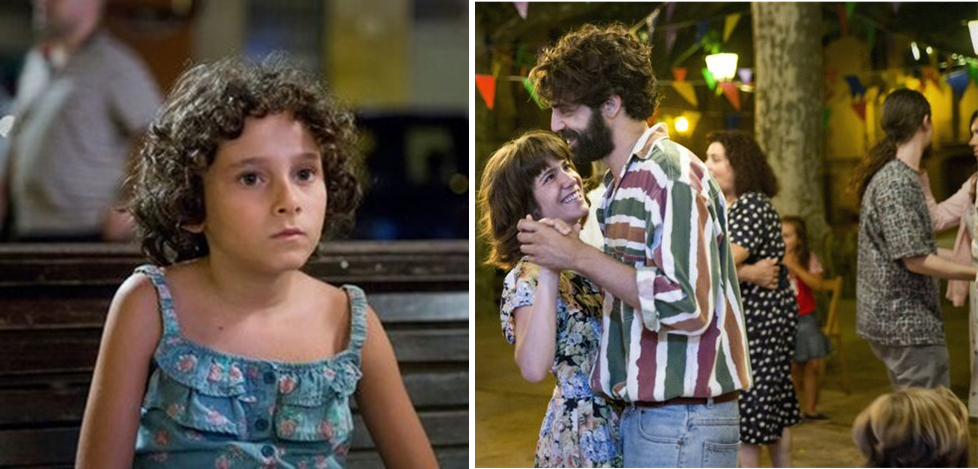
There is a scene – possibly the darkest in the entire film – where Frida provokes Anna to go and hide among some distant trees as part of a game. To some extent, Frida might be wishing for Anna’s disappearance, thinking that she might, in some way, take her place and become the one and only daughter in the family. The scene is utterly unnerving: for all we know, Anna may have drowned in the lake nearby. When Frida realises this, she is filled with regret, and fear; after all, she does love Anna. This is another example of how the story explores some of the most complex aspects of the human psyche – and through a child at that.
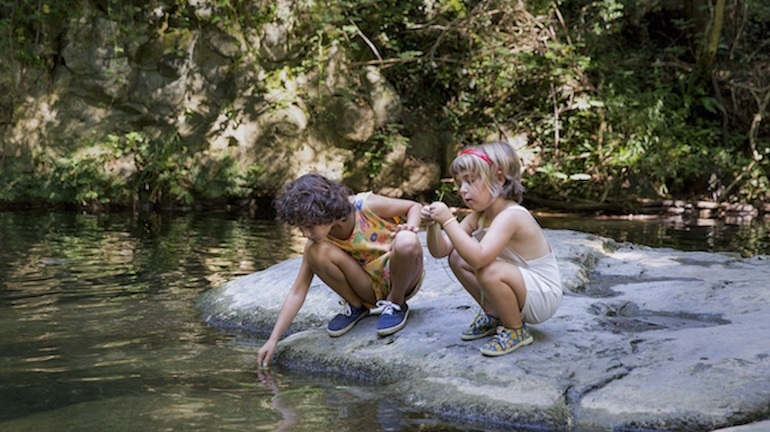
The dynamics of the bond between the two cousins are further examined in many other scenes. One of my favourites is the one where Anna hands a telephone over to Frida as they’re playing, and innocently asks her: ‘Do you want to call your mummy?’ This scene is one almost straight out of a suspense thriller: Frida dials the number, and I catch myself hoping somebody picks up the phone. But, of course, no one does. It’s an exceptionally powerful scene in which, once more, Frida’s pain becomes synonymous to a deafening silence, interrupted only by the ringing sound from the telephone receiver.
Earlier in the film, Frida’s aunt tells her off for pretending she can’t tie her shoes, believing that Frida only does that as an excuse to get others’ attention. Sure enough, when Frida decides to escape the house at night, we see her perfectly capable of tying her shoelaces. The action is only in frame for a few moments, but the visual statement that it makes is very powerful.
The same night Frida decides to run away, Anna finds her in the kitchen. The dialogue exchanged between the two children is once again incredibly effective: ‘No one here loves me’, says Frida as she’s about to leave, to which Anna’s response is ‘I love you’ – in the sweetest and sincerest way imaginable. And we see Frida reciprocating that love when she immediately gives Anna one of her favourite dolls – the very same one she forbids her to touch at the beginning of the film.
Following Frida’s return to the home, there is a bittersweet and honest conversation between her and her ‘new mother’, regarding ‘her mother from before’. It is a conversation you wouldn’t expect a six-year-old to be able to handle, let alone initiate, yet Frida proves mature way beyond her years. In a certain way, the event is almost a rite of passage in her life, and perhaps she can finally begin anew. Her new mum kisses her goodnight and caresses her.
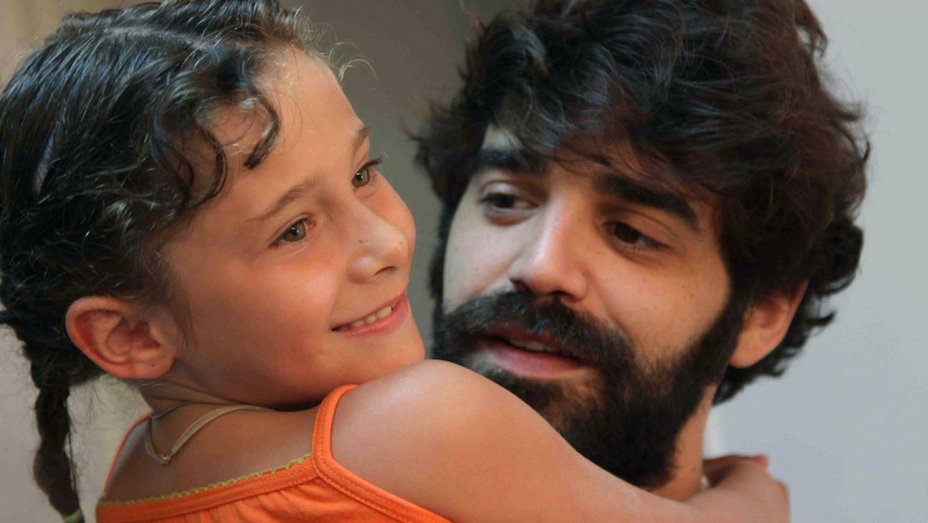
After a scene where the father is playing with both his daughters (and an absence of POV shots that distinguish between a ‘her’ and a ‘them’), the film concludes with a finale that is as unexpected as it is touching. While in the middle of a seemingly joyful game with her new father, Frida very abruptly begins to cry – for the first and only time in the entire film. And the unanswered question from the beginning of the film, ‘Why isn’t Frida crying?’ is suddenly replaced by a far more upsetting one: ‘Why is Frida crying?’
Are they tears of sadness? Tears of joy? Is Frida mourning her loss or does she feel, for the first time, that she can finally adjust to her new life? Maybe she’s crying because she has finally stopped suppressing her grief. The film is incredibly wise to leave these questions unanswered, allowing the ending to become whatever the viewer makes of it.
I don’t pretend to understand (in the deepest sense of the word) the subject matter of the story, but Estiu 1993 made quite an impression on me at the London Film Festival. If anyone was entitled to tell this story through the eyes of the child protagonist, it was Carla Simón, and her film – sincere, and as bittersweet as life itself – is a truly unique and wonderful contribution to the world of cinema.
Estiu 1993 (Summer 1993) premiered the 10th of October at London Film Festival. Trailer below.

